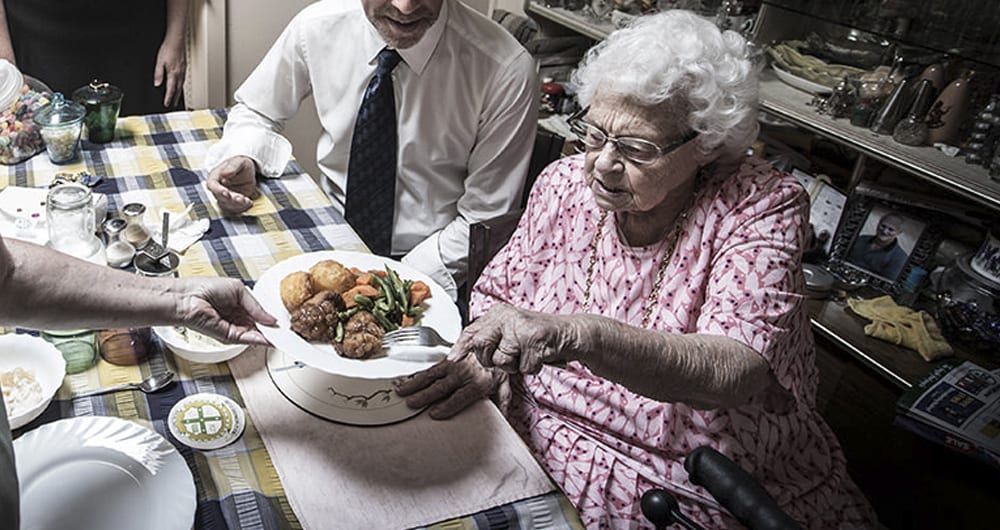
Food in aged care goes beyond the simple idea of “serving a nutritious meal” – a simple feat that many facilities aren’t even achieving
According to 2014 report by the Dietetic Association of Australian, 40-70% of residents are malnourished.
Jo Cleary from the Dining Experience Specialists spoke about these issues at ITAC 2017 in the Gold Coast.
Jo assists aged care managers to optimise the meal services using innovation, visualisation and automation to increase resident satisfaction, better manage costs and improve systems.
While increasingly complex, Jo reviews services to make the invisible meal issues visible.
“The NQ is a term I made up – it is the nutritional quotient. A lot of people don’t understand what the nutritional quotient is, but it’s a new way of looking at food”.
“About half the residents in aged care are malnourished or undernourished – though the figures are a bit rubbery because it’s quite hard to measure, and no one is really measuring it”.
At the moment, malnourishment is a huge topic of discussion in aged care, as Jo explains, “it can have unintended consequences, with malnourishment and dehydration can happen and often gets forgotten about”.
“Encouraging adequate food and drink consumption is important for resident health as it can lead to these ‘unintended’ consequences and more care time”.
“For return on investment on the food budget – some facilities are spending $6 on food”
Jo says that there are three drivers of digital transformation in aged care meal services.
First is the accreditation changes, where it says that food and beverages need to be of adequate variety, quantity and quality.
“It’s not prescriptive of what to do, it’s a measure for accreditation. And it’s a concern, I find, of how do we show ‘adequate variety, quantity and quality’ and that nourishment and weight loss that is unmeasured”.
“To do that, there is a dietician approved menu that is rotated every 4 weeks. So they can say ‘yes, we provide adequate nutrition – here’s our menu’”.
“But what I find, is that people don’t often eat what’s on the menu”.
The second is the reports from the Government. On significant report was the Carnell-Patterson reports which had 10 recommendations for aged care.
“Including measurement as evidence, this is where we will see a lot more assistive technology that can measure and gather evidence about care and nutrition”
David Tune released his review in July, which has 38 recommendations, “around funding, placement and increased training”.
The last, thirst one is consumer demand. “What I found when I undertake a meals review, quite often, a facility will focus on compliance and safety and a quality outcome for the resident is in the background – and even goes out the window”
“I call it the chasm,” Jo explains, “where you have the resident, and it starts off with putting them at the centre of care. But then in the meantime, other functional stakeholder come and support or thwart a meal”.
What can influence a meal is a number of different groups, “I have come up with 45 different functional stakeholders”
These include the board, health department, maintenance, marketing, PR, social media, safety supervisors, quality agency, family and the residents themselves.
“It’s a big task for a manager to not only give that compliance and safety, but to measure and monitor the meal”
“So rather than focussing on a quality outcome for the residents, keeping the food safe and compliant – can lead to overcooked and task driven food.”
“Something I called ‘who murdered the meal’, and for the resident it ends up not being a very good experience.”
“If the food quality is down, and the residents aren’t eating it. Some of the consequences is that the nutritional quotient goes down and that means there is more care required, more interruptions for the staff”
In terms of technology, Jo is interested in “solving one boundary problem, which is measuring the actual consumption of food and drink and an individual basis”.
“I think in the future, accreditation will not be satisfied with just saying ‘I have a nutrition menu’, they will want to see that residents have had adequate food and hydration”.
Jo says there needs to be “something that was easy to use, that captures the information as part of the evidence”
“If you can measure it, you can manage it. But until we stop murdering the meal, our attempts at improving the dining experience can fail”.
What do you have to say? Comment, share and like below.